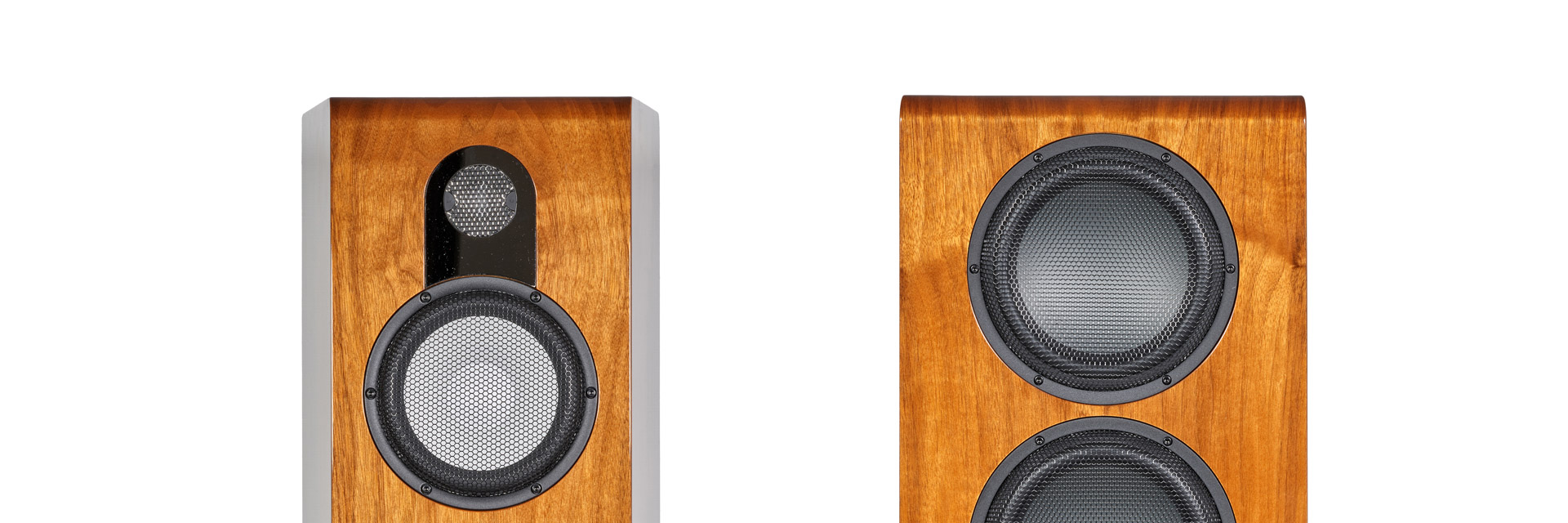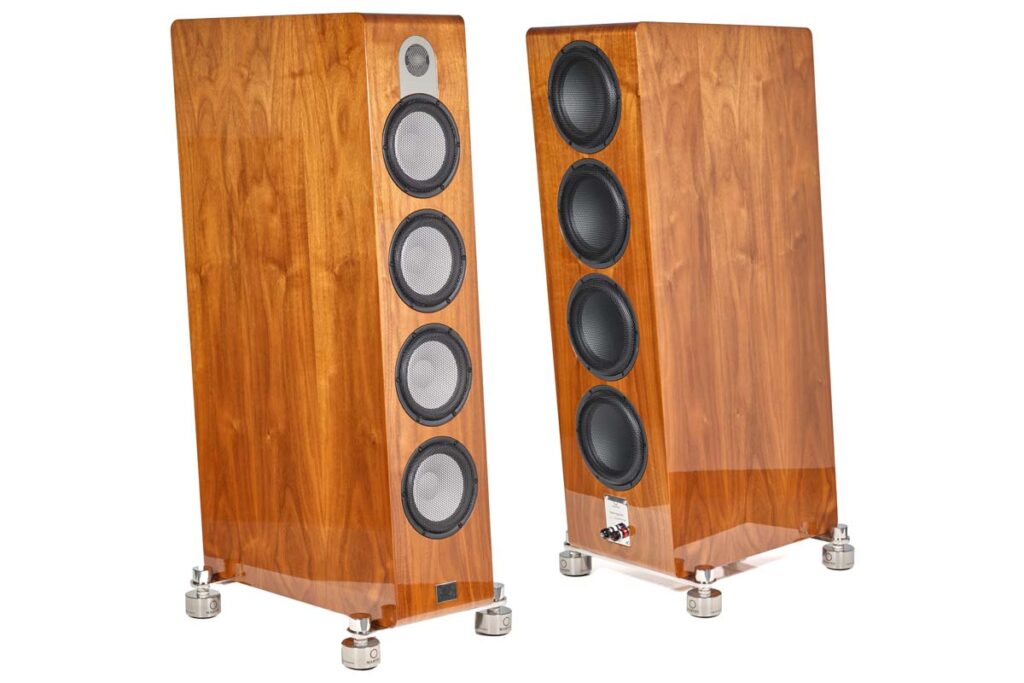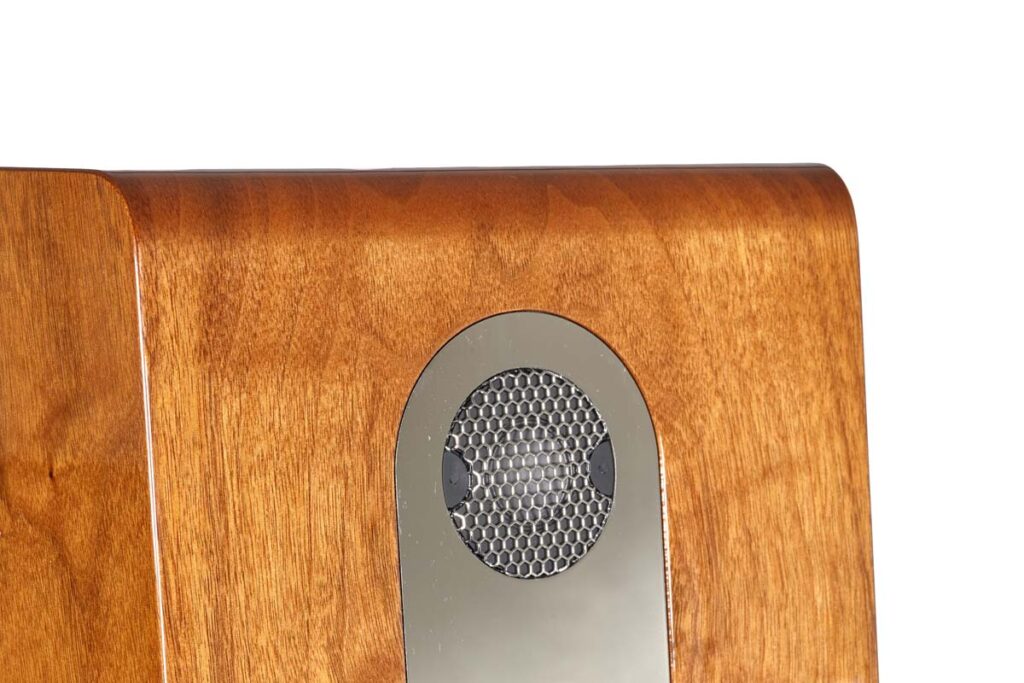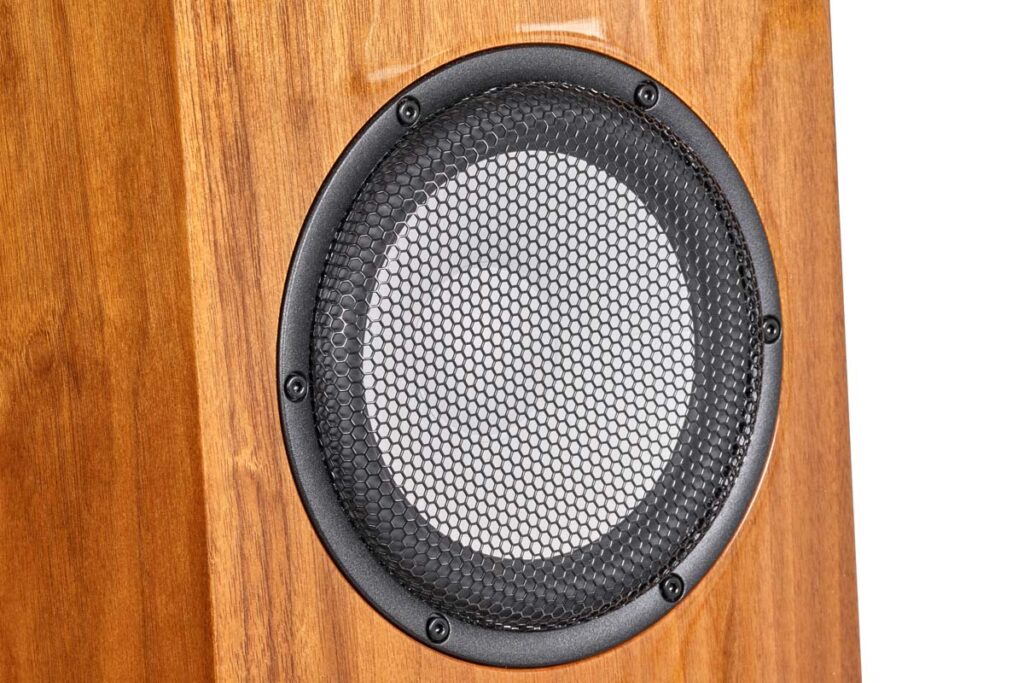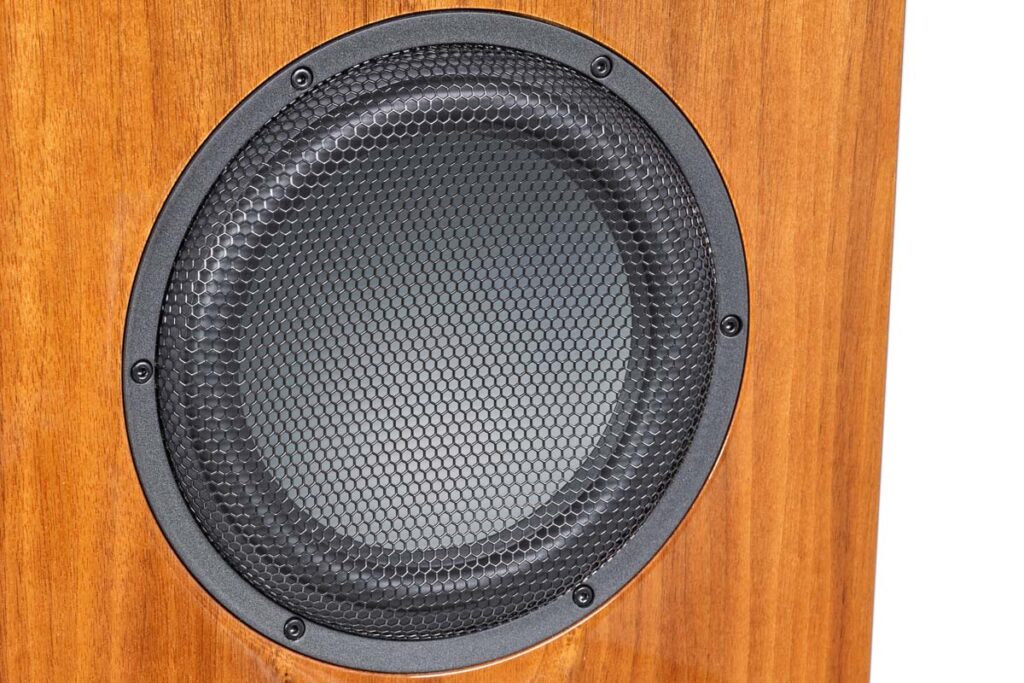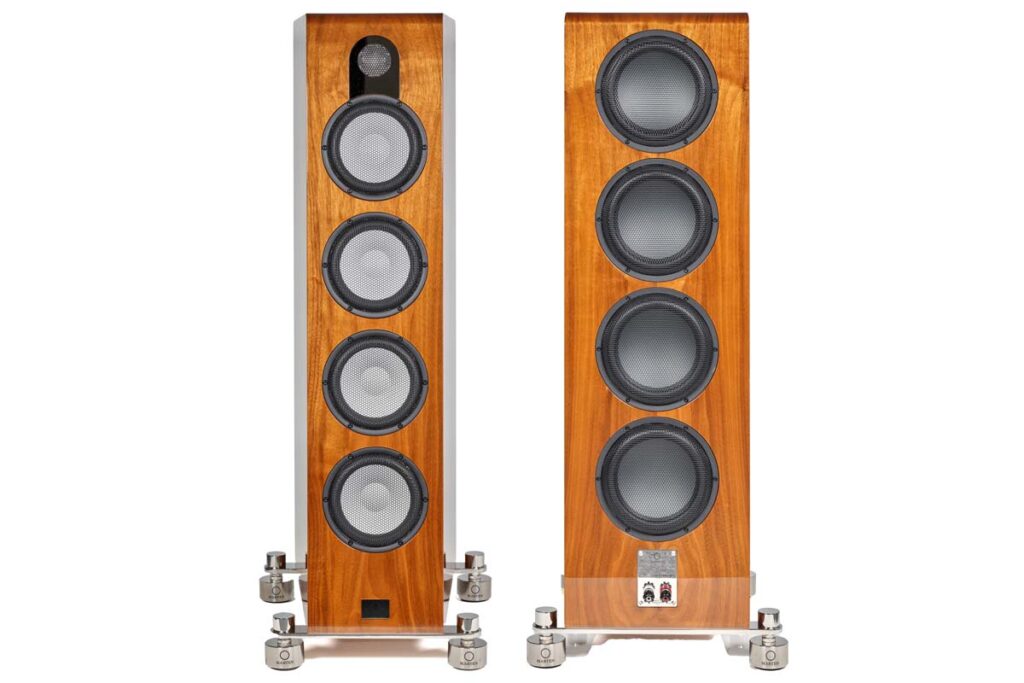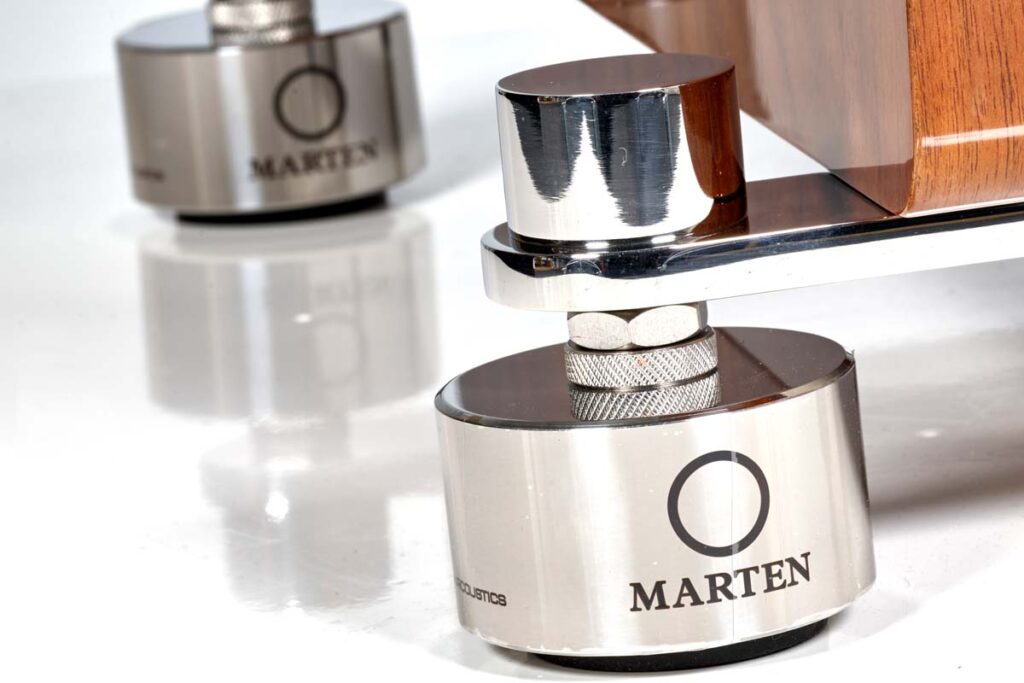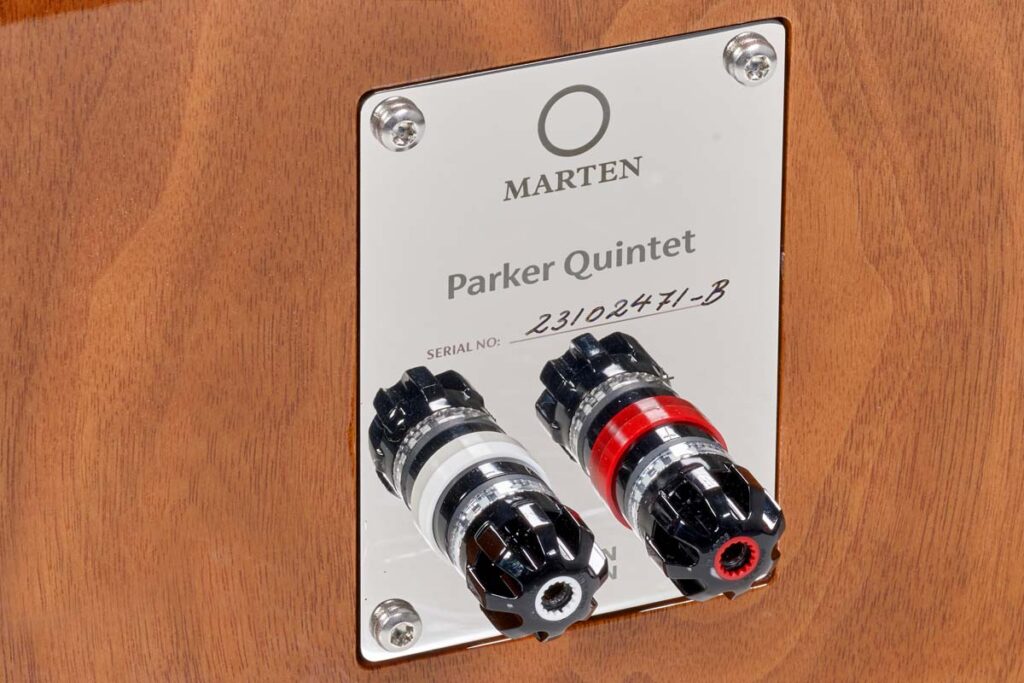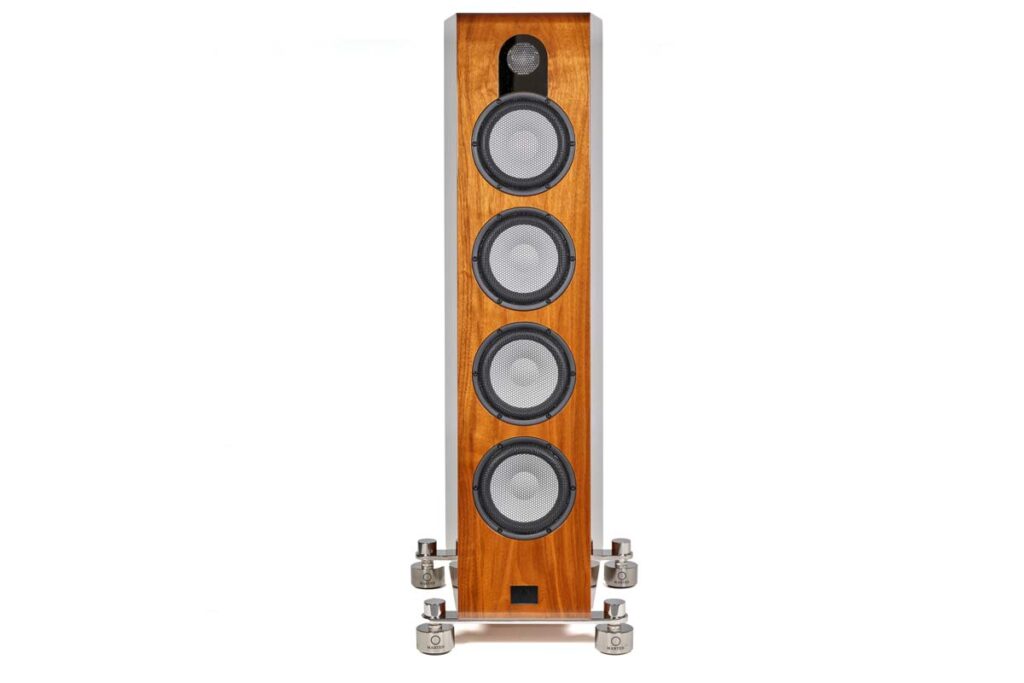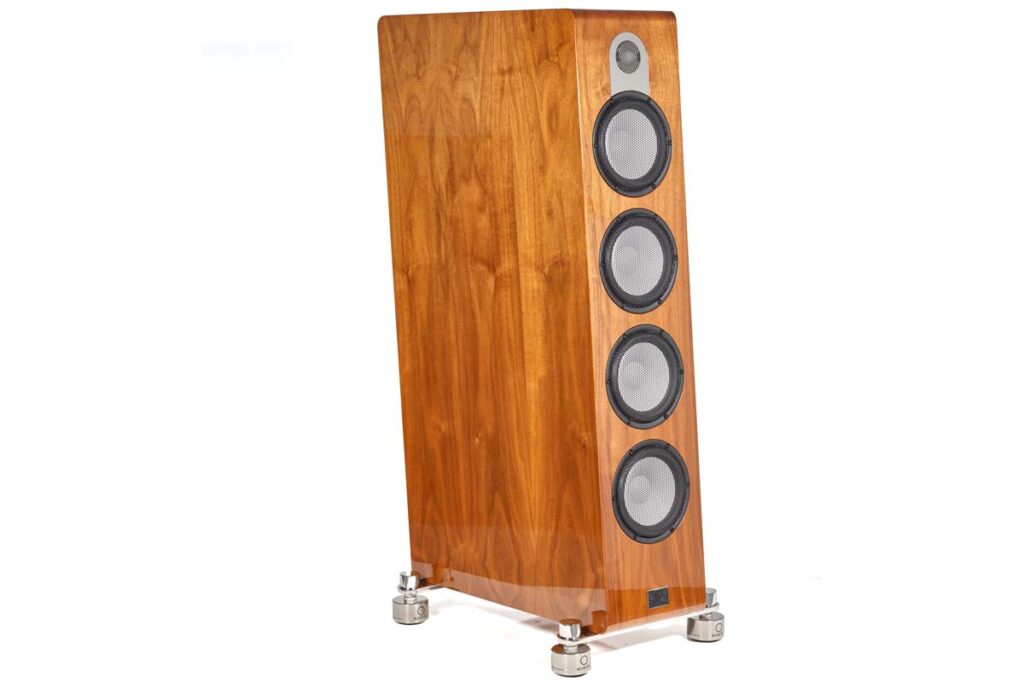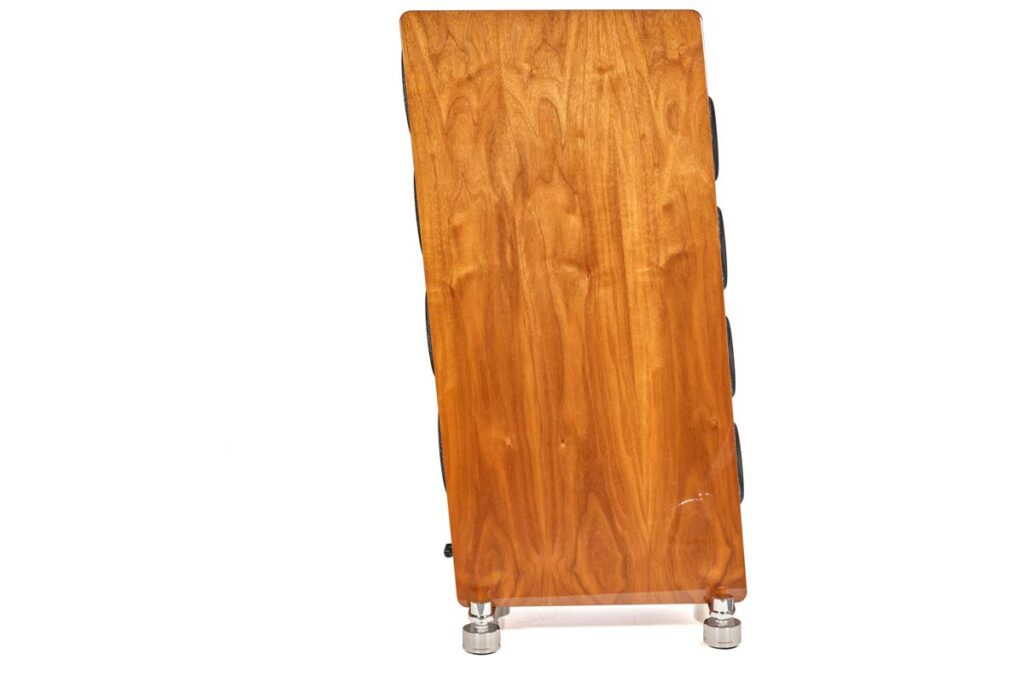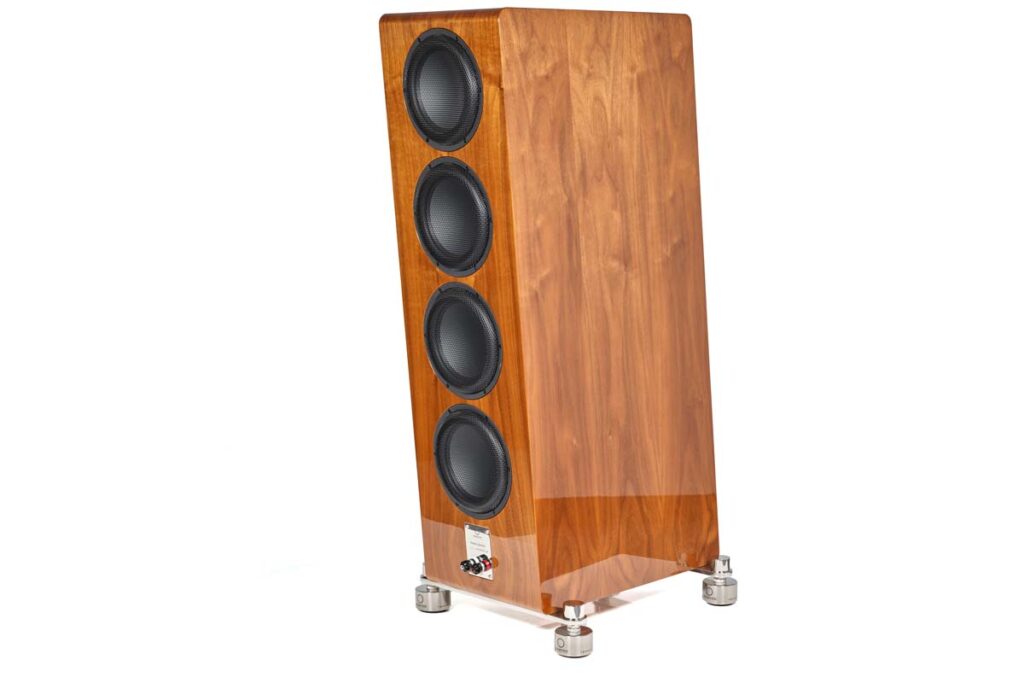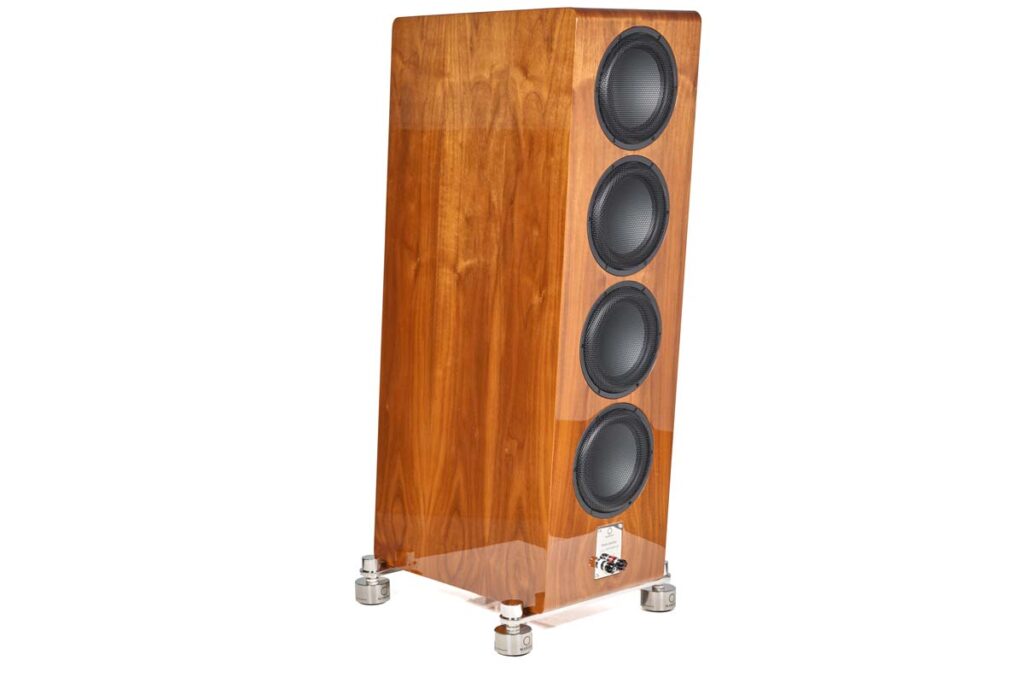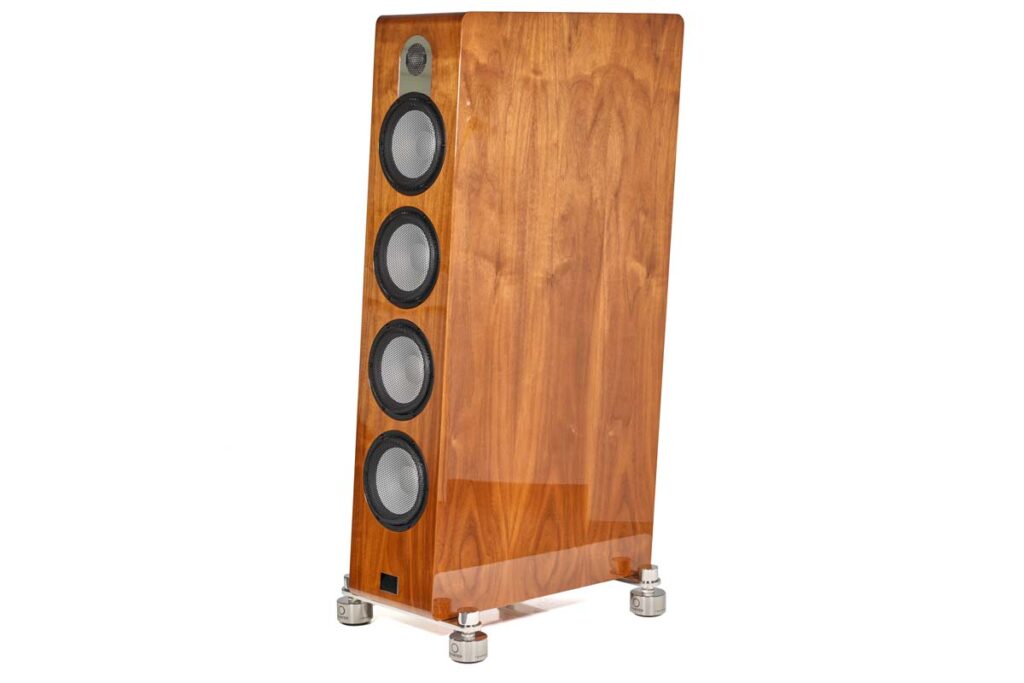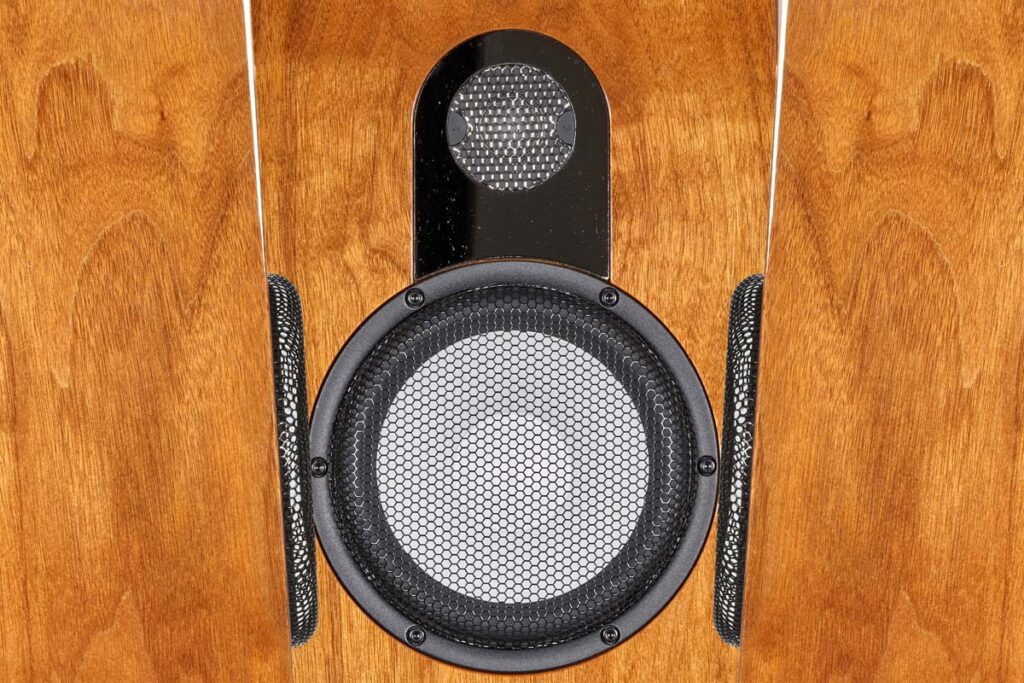Leif Marten Olofsson simmers loudspeaker concepts down to be as simple as possible, only to then laying it on thick with decadent material use. The result is loudspeakers that initially come across as visually and sonically massive, then wow you with surprising agility and impressive sensitivity. Let’s take the Marten Parker Quintet as an example.
Loudspeaker design is a fascinating subject: Within a couple of months, you can teach yourself all the important basics, and yet even (or especially?) experienced developers can find seemingly endless ways of tweaking the details of apparently conventional concepts, sometimes arriving at dramatically different results. How can that be? One key reason is probably the fact that every loudspeaker has to fulfill a number of requirements, some of which are diametrically opposed to each other: To get the best possible time alignment, perfect imaging and a coherent presentation, you’d theoretically want an infinitely small full range driver. At the same time, it’s clear that there is no way around diaphragm area and cabinet volume if dynamics and deep, powerful bass are required.
Leif Marten Olofsson, the man behind the Marten brand, has been working on ways to make a large full-range loudspeaker with half a dozen drivers sound coherent and cohesive since 1998. He’s obviously not the only one to try this, and at first glance his speakers seem quite conservative – in many respects they are: voluminous cabinets, generously equipped with ceramic drivers throughout, plus finishes that tempt you to simply place a pair in your living room as sculptures, undoubtedly testify to genuine high-end aspirations, but don’t necessarily scream “Innovation!” at you. As is so often the case, the devil is in the detail – or rather, in the details. This starts with some tried and tested tricks in enclosure design, which deviates from the usual rectangular format in different ways depending on series: In the Parker Quintet, which we currently have as a guest in our listening room, the side walls are not parallel to each other; instead, the cabinet is trapezoidal when viewed from above, so that the baffle is narrower than the speaker itself. A narrow, elegant silhouette is often cited elsewhere as the reason for this, but this cannot be said of the Parker Quintet by any stretch of the imagination: it is beautiful to look at, but its powerful presence dominates even generously proportioned living rooms. The aim here is certainly to avoid standing waves in the cabinet.
Olofsson wouldn’t want the Quintet to be too slim anyway, as the baffle has to provide enough space for the four 18 cm mid-woofers. And it’s precisely at this point that the developer’s approach becomes clear: Whilst he has gone big on volume and cone area, he has taken a deliberately minimalist approach to the filter design and has actually constructed the huge lump as a two-and-a-half-way system. The direction is clear: if you are not prepared to limit the number of drivers, make sure that they are driven as uniformly as possible. In general, a kind of two-stage approach runs like a red thread through the entire design: in a first step, considerable thought is put into streamlining the concept in its basic principles as much as possible, and then, building on this, ways are sought to drive as much worthwhile effort as possible through decadent use of materials and complex implementation of details.
Olofsson takes the minimum possible approach not only in the number of paths, but also in the choice of filters. He would normally prefer to use only first-order filters, but not even the ceramic drivers used here are good enough for him – that is reserved for the (even) higher-class series. In order to come as close as possible to the ideal of a flat slope, the resourceful Swede uses a clever trick in the crossover, which goes by the marketing-friendly name of “Multi Diverse Crossover” and applies elliptical filters that behave like first-order filters around the crossover point and only gradually move towards a 12 dB/octave slope as they go further into the stopband. This would normally mean a relatively low component cost – but Olofsson wouldn’t be Olofsson if he didn’t find a way to raise said component cost to a level that sould be described as overkill, even in this price range: The use of expensive and space-consuming film capacitors and flat ribbon coils from the top shelves of renowned manufacturers such as Mundorf may not seem surprising, but the crossover design, which is only superficially outlined in the above characterization as a two-and-a-half-way construction, requires that not each driver group, but each individual driver has its own filter with its own crossover frequency. The crossover components alone take up a surprisingly high proportion of the abundant internal volume as a result. The fact that the entire inner workings are not wired with simple lamp wire, but with Duality strips from Jorma, also a Swedish company, seems only logical given the effort put into all other areas.
Olofsson relies on four rear-mounted passive radiators, which, like the tweeter and woofers, are made of ceramic for maximum homogeneity, to ensure that the lung volume down low is as efficient and controlled as possible. In addition to pistonic cone movement, he cites another, somewhat surprising reason for this decision: Since the combined cone surface moves a decent amount of air even at minimal excursions, the Martens can reproduce full bass volume even at significantly lower volumes than would be the case with a bass reflex system. In conjunction with the good sensitivity figure of 93 decibels, this characteristic also predestines the Parker Quintet for pairing with small, fine tube amplifiers.
Since the keyword “full bass volume” is by no means to be understood as an empty threat in view of the cabinet dimensions and the driver configuration, Olofsson does not rely solely on the 60 kilograms per speaker to calm the structure, but also ensures the best possible control when coupling to the floor. For once, however, he has not come up with a solution himself; instead of the usual spikes, he relies on damping speaker feet, which he obtains from IsoAcoustics and which lead me directly to the listening impressions.
The absorber feet are a little more complex than it might seem at first glance: they do not simply couple softly to the surface, but work directionally in order to effectively decouple the transducer from impact sound on the one hand, but also not to take any energy out of the bass impulses on the other. Accordingly, it is essential to ensure that all feet are aligned with the Marten logo facing forward so that the listener, not the speaker, nods and bobs to the music.
This is something I wasn’t initially aware of, however, so I had a hard time really warming up to the Martens at first. It was only after Jan Sieveking, who is responsible for the Swedes’ German distribution, drew my attention to this detail that things truly clicked. The fact that the correct alignment didn’t impact bass performance so much as the presence range and treble, took me somewhat by surprise. It makes perfect sense on second thought, though: the cabinet deflection caused by bass excitation must be completely negligible compared to the wavelengths in the low frequencies – but when you consider the tiny excursions in the treble, the need for an absolutely stoic cabinet quickly becomes apparent.
With “Breaking Down Blues” by Glim Spanky (Walking On Fire), for example, the Swedish transducers left nothing to chance in the bass from the outset: The bass drum and electric bass were as powerful as they were contoured, and the spatial information contained in the bass was obviously also fully present and provided a good impression of the expansive stage dimensions of the live recording. However, there was definitely something wrong with the overtones of the guitar and especially with singer Remi Matsuo’s voice: not only was everything floating around somehow, but the vocals in particular had a very slight nasal, electric coloration. Made aware of the importance of alignment, I realized that I had somehow managed to make each foot point in a different direction – and lo and behold, after the correction, the vocals and guitar are nailed in place in the projected space and the timbres are on point, while the Martens are still certainly generous when laying out the bass foundation. Nevertheless, even and especially in the low-end, everything always remains well sorted, and the typical rumbling bass you get on live recordings never threatens to obscure the melody of the bass line or the occasional background vocals.
The next thing I check is tonality with the help of Diana Krall’s “The Girl In The Other Room” from her album of the same name – and indeed, the Marten doesn’t show the slightest bit of weakness here either: Krall’s characterful, dense voice with its slightly smoky note comes across in its full vibrant splendor, but is exemplarily free of coloration. And it’s in this fairly quiet piece, of all things, that I get an impression of the lightning-fast dynamics that the Swedes are capable of: around the middle of the song, there’s a sudden, explosive percussion beat – I know the piece well and saw it coming from a mile away, but when it hit, it actually gave me a little jumpscare. You have to spend a little time with the Marten Parker Quintet. Their impressive authority in the bass can easily mislead you into thinking that you’re listening to cozy, maybe even lazy speakers – but you could hardly be further off the mark: they resolve superbly and deliver all those subtleties to your ear that make the enjoyment of a good recording truly complete. In addition, they can set their sonic mass in motion in a flash when required, then stop on a dime. They are simply not the kind of speakers that feign speed with slim voicing, but rather lend the music room-filling weight, while finely dosing the volume and controlling it with razor-sharp precision. To describe them as “full-sounding” would be a bit short-sighted – “complete” is a much better description.
Accompanying Equipment
CD players: Accuphase DP-570, Audio Note CD 3.1x, Esoteric K-05XD | Network players/streamers: Lumin P1, Aavik SD-880, T+A PSD 3100 HV | D/A converter: Benchmark DAC 3B | Preamplifiers: Accuphase C-2300, Electrocompaniet EC 4.8 Mk II | Power amplifiers: Accuphase P-7500, Burmester 216, Electrocompaniet AW-800 | Loudspeakers: Nubert nuZeo 15, Wilson Audio Sasha DAW | Cables: WestminsterLab, AudioQuest, in-akustik | Racks: Finite Elemente, Creaktiv, Beaudioful
Marten Parker Quintet
Concept: passive 2.5-way floorstanding loudspeaker with rear passive cones | Configuration: 1 x 25 mm ceramic tweeter, 4 x 190 mm ceramic bass-midrange drivers, 4 x 230 mm passive cones | Crossover frequency (tweeter to bass-midrange array): 2200 Hz | Sensitivity (2.83 V/1 m): 93 dB | Nominal impedance: 4 Ω (2.7 Ω minimum) | Frequency response (-2 dB): 24 Hz to 40 kHz | Power handling: 350 W | Special features: elliptical “Multi Diverse Crossover” crossover, absorber feet from IsoAcoustics | Finishes: Satin walnut, high-gloss walnut, black lacquer, white lacquer | Dimensions (W/H/D): 33/117/54 cm (without feet) | Weight: 60 kg | Warranty period: 5 years | Price per pair: € 31,000; walnut piano lacquer (review sample) € 32,600
Sieveking Sound
Plantage 20
28215 Bremen
Phone +49 421 6848930
kontakt@sieveking-sound.de

